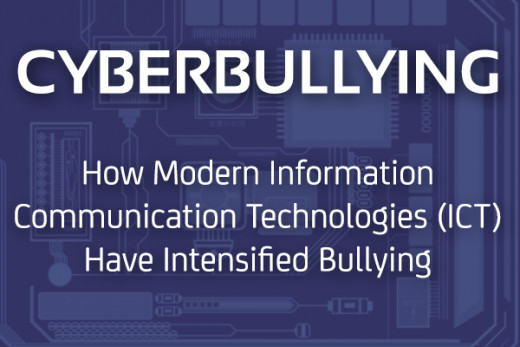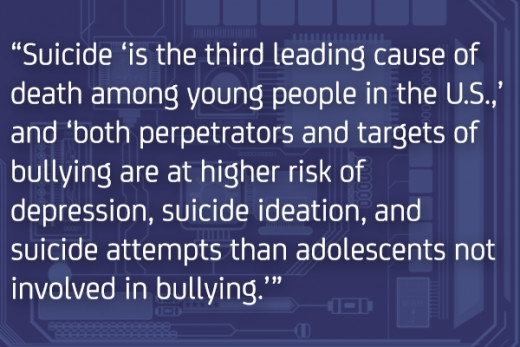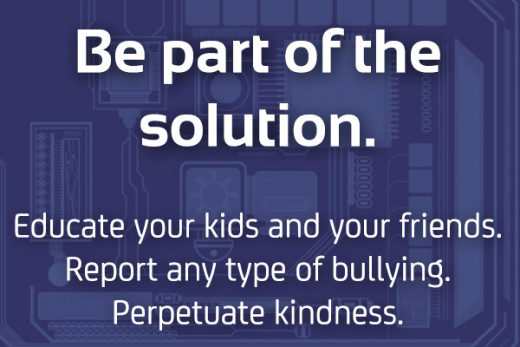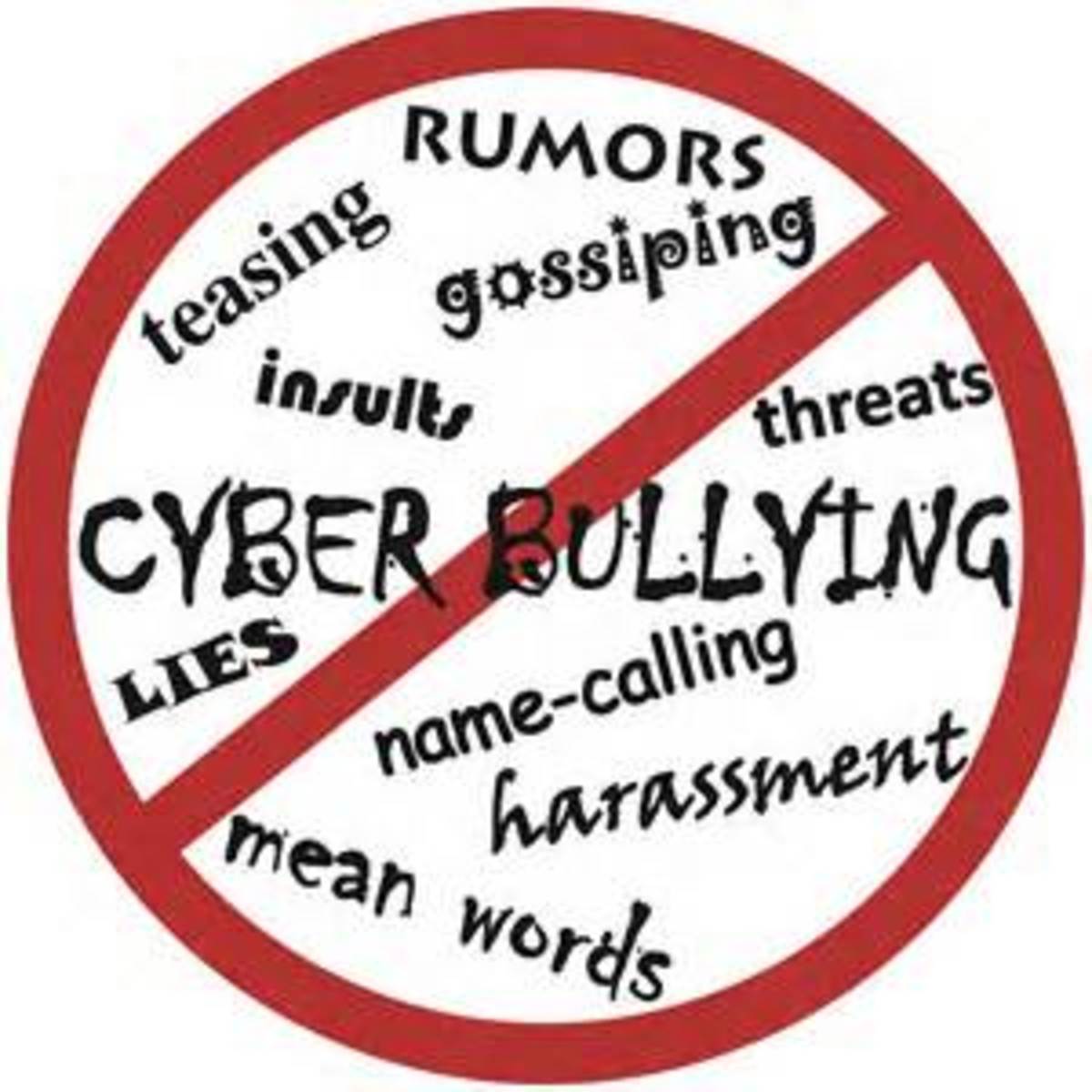Cyberbullying: Why Modern Information Communication Technologies (ICT) Have Intensified Bullying

Why is cyberbullying more detrimental than "traditional" bullying?
Cyberbullying has proven to be more harmful to victims than "traditional" bullying because it combines aspects of bullying with the pervasive power of digital technology. In this analysis, I will examine these topics in depth:
- Speed and scale of digital communications
- Ambient intimacy
- Anonymity of technology
- Cultural perpetuation of cyberbullying
Bullying Gone Cyber
The concept of bullying is certainly not a new one, but the practice is gaining reach and momentum amongst today’s youth with modern information communication technologies (ICT). This new version has been appropriately dubbed “cyberbullying,” and combines many of the tactics of “regular” or “traditional” bullying with the added capabilities of digital communications, making it easier for perpetrators and even more harmful to victims.
As researchers attempt to tackle this new phenomenon that is abound in our schools, it is essential to define bullying and cyberbullying, highlighting their similarities and differences. “Regular” or “traditional” bullying, as I will refer to it throughout this paper, is generally defined as repeated, “unwanted, aggressive behavior . . . that involves a real or perceived power imbalance” (“Bullying definition,” 2013), and results in negative and often lasting effects on the victim. Cyberbullying encompasses this general definition, with the added specification that it uses an electronic medium to commit that harm (Hinduja & Patchin, 2008) rather than being a face-to-face or physical interaction; examples of an electronic medium include mobile phones and the Internet, the two most prevalent platforms used in a variety of ways to commit cyberbullying (Görzig & Frumkin, 2013).
It is important to note that defining these terms is less than straightforward; with a variety of platforms and the complex social interactions that take place within them, these general descriptions cannot fully explain cyberbullying—for that, we must delve deeper into the digital world that adolescents today are growing up in and the effects that ICT are having on their social cultures.
This academic analysis will examine cyberbullying and why it has proven to be more detrimental to adolescents than regular bullying; more specifically, I will look at the speed and scale at which information can be shared using digital communications, the issue of ambient intimacy, the anonymity of technology, and the cultural perpetuation of cyberbullying as factors for the increased dangers of cyberbullying compared to regular bullying.

Tyler Clementi Case: Dharun Ravi's Hate Crime Charge
Speed and Scale of Digital Communications
The speed and scale at which we can share information is phenomenal. When used appropriately, the benefits and convenience of the Internet, mobile phones, and other digital communication technologies are astounding. However, these technologies inevitably have a “dark side,” and can be used for harm rather than good (Campbell 2005).
The same platforms that allow us to stay in touch with family members and friends, converse with people from around the world, and learn about any given topic are frequently used to target and harass users. Many sources have concluded that approximately half of all American teens and adolescents have experienced cyberbullying, and just as many have participated in it (“Cyber bullying statistics,” 2013; Campbell 2005).
While this assessment is troubling in and of itself, it is essential to remember that cyberbullying has far more capabilities for harm than regular bullying; not only are half of all young people experiencing or participating in the practice of bullying, but it is on a cyber level—a level that allows information to be shared far and wide. With the push of a button—literally—cruel messages, embarrassing photos, or slanderous rumors are instantaneously sent to dozens, hundreds, perhaps even thousands of people. The Internet knows no geographical boundaries; the content from a cyberbully can easily be spread locally, nationally, and even globally. This is known as indirect cyberbullying, which occurs when “the bully posts [harassing or discriminating content] on MySpace, Facebook, a specially created Website [sic] or blog, or some other reasonably public area of cyberspace,” rather than in electronic communications sent directly to the victim, known as direct cyberbullying (Langos, 2012, p. 286).
The repercussions of this sort of reach can be devastating; in September of 2010, 18 year-old Tyler Clementi committed suicide after his dormitory roommate and a hallmate at Rutger’s University used a webcam to spy on him kissing another young man, encouraging others to watch the live feed via Twitter and in person (“Times topics: Tyler Clementi,” 2012). While regular bullying about his sexuality from his college roommate would have been damaging enough, ICT allowed the roommate to elevate this damage by spreading private and intimate footage of Clementi to many other students at the university, causing him to take his own life within only three days (Foderaro, 2010). This incredibly short time span from initial incident to Clementi’s suicide demonstrates the ability of cyberbullying to transform a happy young man into a devastated victim with ease and speed.
Unfortunately, Clementi isn’t alone: suicide “is the third leading cause of death among young people in the U.S.,” and “both perpetrators and targets of bullying are at higher risk of depression, suicide ideation, and suicide attempts than adolescents not involved in bullying” (Bauman, Toomey, & Walker, 2013, p. 341). The detrimental effects of bullying, now primarily performed through electronic mediums, have only become exacerbated by those mediums and their reach.

Have you ever been the victim of cyberbullying?
Have you ever been the perpetrator of cyberbullying?
Ambient Intimacy
The speed and scale at which information can be shared is one of many reasons for this exacerbation, but another crucial factor to examine is the issue of ambient intimacy. “Ambient intimacy,” a term coined by communications consultant Leisa Reichelt, is defined by her as, “being able to keep in touch with people with a level of regularity and intimacy that one wouldn’t ordinarily have access to because of the restrictions of time and space” (Berman, 2009, p. 5). While this certainly lends to the positive results of being in more frequent contact with your family and friends, ambient intimacy presents serious issues for the targets of cyberbullying.
In simpler terms, ambient intimacy means that you are nearly always reachable through digital communications, like your cell phone or social media profiles. Regular bullying often occurs at school, and is face-to-face or even physical; that abuse ends when the victim leaves the school setting—though that is not to say the effects of that abuse end there. With cyberbullying, there are no physical limits to when or where a bully can reach you; you can never escape. So while the effects of the abuse don’t end, the same as traditional bullying, the actual harassment doesn’t end either.
The cycle has become more vicious, feeding into the troubling teen depression and suicide statistics mentioned previously. In fact, some studies have found that cyberbullying actually occurs more prevalently outside of school than during (Smith, Mahdavi, Carvalho, & Tippet, 2006), suggesting that students may be dealing with instances of regular bullying and/or cyberbullying throughout the school day that continues in the form of cyberbullying at home. This intensified persecution means that teens and adolescents are facing relentless bullies and have no time or place to escape from them.
Anti-cyberbullying advocate Jessica Manzer experienced these negative consequences of ambient intimacy during her high school years; after the death of her father, fellow students took to harassing her publicly on her Facebook profile, making cruel comments about her father’s passing, and creating a page titled, “The Jessie Manzer Retard Foundation” within days (J. Manzer, personal communication, November 21, 2013).
Jessica writes that “[the] boys took pictures off of my Facebook page, captioned them with hurtful comments, and encouraged other friends from school to like the page and contribute to the bullying,” noting the peer pressure and mob mentality associated with cyberbullying, as well as her resulting anxiety, depression, and suicide attempt (J. Manzer, personal communication, November 21, 2013).
“There was no escape,” she says. “From the moment I woke up, throughout the day at school, and until the moment I went to sleep I was plagued by these attacks. I thought the only escape would be dying” (J. Manzer, personal communication, November 21, 2013).
Manzer, like Clementi, is not alone: studies have found an expected positive correlation between cyberbullying and depression, with 10% of victims reporting severe depression, 16% reporting minor depression, and even more (30-34%) reporting intense anger and frustration (McDermott, 2012). These rates of depression in teens and adolescents due to cyberbullying are the result of several factors, including ambient intimacy.

Have you ever said something mean or hurtful online that you wouldn't have said in person?
Anonymity of Technology
In addition to ambient intimacy allowing perpetrators to constantly reach their targets, the anonymity of technology allows them to do so more intensely than regular bullying with a lessened sense of responsibility. This relatively new phenomenon of cyberbullying has proven difficult for researchers to study due to its “intangible, non-corporeal nature, much like other forms of cyberdeviance” (Sameer & Patchin, 2008).
Ironically, it is this intangible, non-corporeal nature that makes electronic mediums ideal for bullies: there is an ease with which one may disguise themselves as another or remain entirely anonymous while online. With the ability to “hide behind the computer screen,” if you will, many young people who perhaps would not actively participate in face-to-face bullying find it easier to harass and demean others through digital means; this is known as the online disinhibition effect (Aoyama, Barnard-Brak, & Talbert, 2011; Suler, 2006). Essentially, “some people self-disclose or act out more frequently or intensely than they would in person,” due to a variety of factors, including dissociative anonymity (Suler, 2006, p. 184).
Even without utilizing a guise of anonymity, the avoidance of a face-to-face confrontation allows perpetrators to absolve themselves of some guilt and responsibility, as they often circumvent experiencing the social cues and genuine reaction of their target(s); this is known as deindividuation (Aoyama, Barnard-Brak, & Talbert, 2011).
In conjunction with this dehumanization of their targets as well as offenders feeling less reserved online, another important element that allows cyberbullying to outweigh regular bullying in detriment is the concept of power differential. An essential element in both traditional bullying and cyberbullying, it is defined for both as the “demonstration or interpretation of power by the offender over the target,” the main criteria being that a victim cannot easily stand up for him- or herself (Langos, 2012, p. 286).
This notion is exacerbated by the anonymity of technology: Dr. Colette Langos (2012) states that, “[i]n the physical world, a person’s characteristics such as popularity, height, intelligence, physical strength, age, sex, and socioeconomic status can give a perpetrator perceived or actual power over a victim” (p. 286-287). While these traits are still often considered when an offender chooses a target, the anonymous or ambiguous nature of cyberspace means that an offender can conceal their own weaknesses, or that perpetrator and victim may not even know one another to begin with. Electronic mediums, then, only provide further tools to exert actual or apparent power:
"A perpetrator may feel emboldened to engage in cyberbullying as a result of the perceived anonymity cyberspace presents. Cyberbullies are able to create pseudonyms and provisional e-mail addresses and to block their telephone number to conceal their identity. A victim is likely to feel increased feelings of powerlessness by not knowing the person behind the cyber aggression" (Langos, 2012, p. 287).
This level of anonymity is difficult, if not impossible, to achieve through traditional bullying; thus, ICT has enabled bullies to commit harassment and degradation much more destructively than before, by intensifying the power differential between themselves and their target(s). The online disinhibition effect and deindividuation bolster cyberbullies to act more brashly than they might in a face-to-face situation, and combined with the complexities of power differentials in the digital realm, perpetrators are less restrained and more powerful than ever.

Young Girls Arrested for Bullying Classmate in Rebecca Sedwick Suicide Case
Cultural Perpetuation of Cyberbullying
The allure of this level of consequence over others is constantly perpetuated in modern culture: websites and apps are created that encourage forms of cyberbullying and TV shows and movies feature the practice prominently.
Continuing with the perceived power behind anonymity, the website Ask.fm, a question platform website with the option of remaining anonymous when interacting with others, has garnered significant attention following a string of teen suicides related to the site. In September of this year, 12 year-old Rebecca Sedwick jumped to her death after receiving relentless anonymous messages on the site from peers telling her that no one cared about her, that she deserved to die, and to kill herself (Broderick, 2013; Wallace, 2013). Sedwick is one of at least nine Ask.fm-related teen suicides during 2013 alone (Broderick, 2013).
While the online disinhibition effect is certainly at play here due to the anonymous nature of the messages, the larger cultural attitude surrounding these platforms and the behaviors within them is also of interest. In addition to Ask.fm, apps such as Kik messenger, Snapchat, and Voxer (Wallace, 2013) have also raised cyberbullying concerns; while the more traditional social media platforms such as Facebook, Twitter, and Tumblr are still often used as a means to cyberbully, these other websites and smartphone applications foster the practice by promoting deindividuation. Latvian-based founder of Ask.fm Mark Terebin, however, had something profound to say:
"It is necessary to go deeper and to find a root of a problem. It’s not about the site, the problem is about education, about moral values that were devaluated lately. Ask.fm is just a tool which [sic] helps people to communicate with each other, same as any other social network, same as phone, same as paper and pen. Don’t blame a tool, but try to make changes" (Broderick, 2013).
It is not merely that these technologies allow anonymity or communications, but the fact that today’s youth have become ingrained with the cultural acceptance and perpetuation of cyberbullying practices. A website is just another tool; the issue lies within elements such as peer pressure to contribute to cyberbullying, as in Jessica Manzer’s case—which fosters popularity and social acceptance amongst peers—or media glorification of the practice, as on the popular television series Gossip Girl—which attempts to frame such tactics as “bad” and harmful, but also associates them directly with high status, wealthy, and popular teenage characters, which sends a conflicting message.
The culmination of this type of cultural perpetuation, technology’s reach, ambient intimacy, technological anonymity, and countless other factors has resulted in a global society struggling to understand and undertake a comparatively new technological phenomenon.
Addressing the Issue
Research on cyberbullying—and even cyberbullying itself—is in its infancy, but most researchers posit that its effects are generally more severe than those of regular bullying, which has been shown to result in “ increased levels of depression, anxiety and psychosomatic symptoms in victims,” who find themselves feeling “more socially ineffective and have greater interpersonal difficulties” (Campbell, 2005, p. 3).
Considering 93% of teens use the Internet and 63% use it daily (Lenhart, 2010), research, assessment, and education concerning cyberbullying is essential for the health and safety of teens and adolescents. Both parents and educators play significant roles in the lives of youth, and should be well informed on the signs and effects of cyberbullying, as well as how to prevent and intervene.
Zero tolerance policies in schools as well as encouraging students to report instances of bullying (through anonymous tip lines, for example) can assist in lessening the prevalence of online harassment and the subsequent depression, anxiety, and suicidal ideation amongst teens. Thoroughly educating students on the many harmful consequences of being a perpetrator or a victim of cyberbullying will raise awareness and teach positive behavior that will remain with adolescents into adulthood.
As technology continues to develop—ever-more rapidly, I might add—it will remain a tool for bullies, allowing them to intensify the impact of their harassment and degradation towards others; thus, it is crucial to begin a discussion about cyberbullying with teens and adolescents at a young age, and continue to research the practice to further education and prevention methods.

References
Aoyama, I., Barnard-Brak, L., & Talbert, T. L. (2011). Cyberbullying among high school students: Cluster analysis of sex and age differences and the level of parental monitoring. . International Journal of Cyber Behavior, Psychology and Learning, 1(1), 25-35. Retrieved from http://www.irma-international.org/article/cyberbullying-among-high-school-students/51562/
Bauman, S., Toomey, R. B., & Walker, J. L. (2013). Associations among bullying, cyberbullying, and suicide in high school students. Journal of Adolescence, 36, 341-350. Retrieved from http://www.researchgate.net/publication/234697282_Associations_among_bullying_cyberbullying_and_suicide_in_high_school_students
Berman, S. N. (2009). The loss of culture: The changing role of communication. Proceedings of the New York State Communication Association, 2008(1), 1-6. Retrieved from http://docs.rwu.edu/cgi/viewcontent.cgi?article=1037&context=nyscaproceedings
Broderick, R. (2013, September 11). 9 teenage suicides in the last year were linked to cyber-bullying on social network ask.fm. Retrieved from http://www.buzzfeed.com/ryanhatesthis/a-ninth-teenager-since-last-september-has-committed-suicide
Bullying definition. (2013). Retrieved from http://www.stopbullying.gov/what-is-bullying/definition/index.html
Campbell, M. A. (2005). Cyber bullying: An old problem in a new guise?. Australian Journal of Guidance and Counselling, 15(1), 68-76. Retrieved from http://eprints.qut.edu.au/1925/1/1925.pdf
Cyber bullying statistics. (2013). Retrieved from http://www.bullyingstatistics.org/content/cyber-bullying-statistics.html
Foderaro, L. W. (2010, Sept 29). Private moment made public, then a fatal jump. The New York Times. Retrieved from http://www.nytimes.com/2010/09/30/nyregion/30suicide.html?pagewanted=all&_r=0
Görzig, A., & Frumkin, L. (2013). Cyberbullying experiences on-the-go: When social media can become distressing. Cyberpsychology: Journal of Psychosocial Research on Cyberspace, 7(1), article 4. Retrieved from http://www.cyberpsychology.eu/view.php?cisloclanku=2013022801&article=4
Hinduja, S., & Patchin, J. W. (2008). Cyberbullying: An exploratory analysis of factors related to offending and victimization. Deviant Behavior, 29(2). Retrieved from http://www.tandfonline.com/doi/abs/10.1080/01639620701457816#.UqUYX5TXjRc
Langos, C. (2012). Cyberbullying: The challenge to define.Cyberpsychology, Behavior, and Social Networking, 15(6), 285-289. Retrieved from http://www.ncbi.nlm.nih.gov/pubmed/22703033
Lenhart, A. (2010). Cyberbullying 2010: What the research tells us. Pew Research Center's Internet & American Life Project, Retrieved from http://www.pewinternet.org/Presentations/2010/May/Cyberbullying-2010.aspx
McDermott, M. (2012) The relationship between cyberbullying and depression in adolescents (Master’s Thesis). Retrieved from http://thekeep.eiu.edu/theses/894
Smith, P., Mahdavi, J., Carvalho, M., & Tippett, N. (2006). An investigation into cyberbullying, its forms, awareness and impact, and the relationship between age and gender in cyberbullying. DfES Publications, Retrieved from http://webarchive.nationalarchives.gov.uk/20130401151715/https://www.education.gov.uk/publications/eOrderingDownload/RBX03-06.pdf
Suler, J. (2006). The online disinhibition effect. International Journal of Applied Psychoanalytic Studies, 2(2), 184-188. Retrieved from http://onlinelibrary.wiley.com/doi/10.1002/aps.42/abstract
Times topics: Tyler Clementi. (2012, March 16). The New York Times. Retrieved from http://www.nytimes.com/top/reference/timestopics/people/c/tyler_clementi/index.html
Wallace, K. (2013, October 16). Parents, beware of bullying on sites you've never seen. CNN. Retrieved from http://www.cnn.com/2013/10/10/living/parents-new-apps-bullying/
© 2014 Niki Hale








